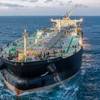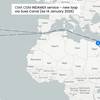U.S. LPG Gas Exports Up in Q1
North American liquefied petroleum gas (LPG) export capacity is forecast to grow considerably over the next two years, said Dorian LPG.
According to the LPG shipping company, bolstered by additional volumes out of Marcus Hook in the northeast U.S. due to the startup of the Mariner East 2 pipeline, U.S. exports reached their highest levels for the first calendar quarter of 2019 in January with over 3 million metric tons of LPG exported during the month.
However, significant reductions in U.S. exports were seen during the rest of the first calendar quarter of 2019 due to closure events in the Houston ship channel.
Additionally, there was tightness in the East due to a reduction in Middle Eastern supply related to OPEC production cuts and U.S. sanctions on Iran. This created a strong arbitrage between the West and East, particularly towards the end of the first calendar quarter of 2019. Despite continued U.S.-China tariffs being in place for LPG, the Far East remained the primary destination for U.S. exports.
On the demand side, a new propane dehydrogenation (PDH) facility started in China (Zhejiang Satellite No. 2), which created additional propane demand in the East.
PDH margins in the Far East came under pressure in the first calendar quarter of 2019, however, with propylene prices falling and feedstock price remaining strong due to supply issues in Middle East and U.S. during parts of the quarter. This trend was most notable in March 2019 and early April.
In Europe and Asia, propane and butane have generally been more economical feedstocks than naphtha so far this year. However, cracker shutdowns and U.S. supply constraints have limited imports for steam cracking somewhat.
Overall, as the first quarter progressed, additional western supply helped widen the propane-naphtha spread in NW Europe from approximately $49/metric ton in January to $95/metric ton in March. In the East, this difference was less pronounced with many of the cargoes exported at the end of the quarter out of the U.S. not arriving until the second calendar quarter of 2019.
Elsewhere in Asia, India saw a strong first quarter of 2019 in terms of imports with levels hitting 1.4 million metric tons in February. It has been suggested that with upcoming elections and the end of the Indian financial year, many importers were increasing their volumes to the domestic subsidized market.
For the first calendar quarter, the Baltic Index averaged $30 per metric ton. The Baltic VLGC Index declined from $36 per metric ton in the fourth calendar quarter of 2018, stabilizing at near $25 per metric ton in February before rising in March to end the month at $41 per metric ton, representing the high for the quarter. For the second calendar quarter to date, the Baltic Index has averaged $56 per metric ton.
The VLGC orderbook stands at around 14% of the current global fleet. An additional 38 VLGCs, equivalent to around 3.1 million cbm of carrying capacity, will be added to the global fleet by calendar year-end 2021. The average age of the global fleet is now approximately nine years old.












